IN THIS ISSUE
- Prehistoric fish in the Oconee
- Native honeysuckle you need
- BOLO for spotted skunks
- St. Simon's busy bald eagles
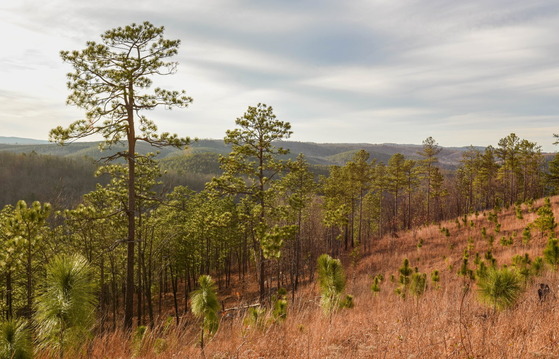 Wander montane longleaf pine woodlands being restored at Sprewell Bluff WMA (Hal Massie/DNR)
If you hear the call of the wild this spring, it’s easy to answer in Georgia: Just head to the closest wildlife management or public fishing area.
DNR manages 11 PFAs, from Silver Lake near Bainbridge to Rocky Mountain near Rome, and more than 130 WMAs and voluntary public access areas totaling 1.1 million acres from Warwoman in the mountains to Sprewell Bluff on the Fall Line and Ceylon on the coast.
A hunting or fishing license offers access and adventure on these public lands, while also supporting wildlife work with those license fees and as much as $45 per license in federal excise taxes paid by hunters and anglers. (A lands pass also provides access but doesn’t add to Georgia’s share of excise taxes.)
Even if you don’t fish or hunt, enjoy the outdoors and scratch that wild itch by visiting a WMA or PFA.
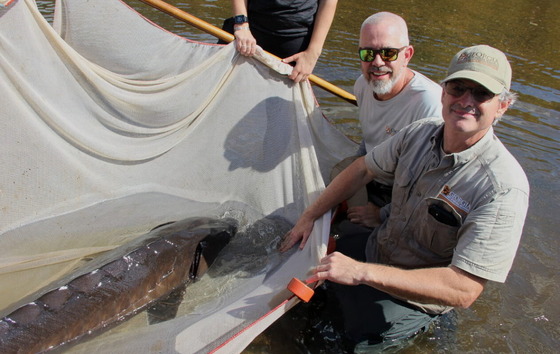 DNR staff check Atlantic sturgeon on the Oconee in October (Special to DNR)
By ETHAN HATCHETT
Last October, concerned anglers called DNR about five, big primeval-looking fish spotted in the Oconee River. The fish, blocked from swimming upstream by a low-head diversion dam in Milledgeville, had leathery skin and what appeared to be armored plates running along their body.
They were adult Atlantic sturgeon, an ancient species that can grow 16 feet long and weigh up to 800 pounds. Yet, although massive and odd in appearance, the only fear here was the fish might be stranded in the shallows on that part of the river.
Fortunately, those concerns turned into hopes for a successful spawning event once biologists determined that the waist-deep water and water quality parameters were fine for the sturgeon, at least for the near future. The team responding from DNR’s Freshwater Biodiversity Program and the University of Georgia’s Sturgeon Lab collected basic data and left the fish alone.
DNR and UGA have been working together to protect this federally and state protected species. Overfishing in the past, poor water quality, dams blocking access to spawning areas, unintended catches by anglers, and dredging of spawning areas have led to the Atlantic sturgeon becoming endangered in all but one population segment, and that one is in the Gulf of Maine.
Atlantic sturgeon spend their life on the eastern coast of North America from Newfoundland to Florida, migrating into coastal estuaries and rivers to spawn in the same waters where the fish began life. These journeys are not without hazards. Sturgeon can become stranded while moving upriver, as they did on Oconee.
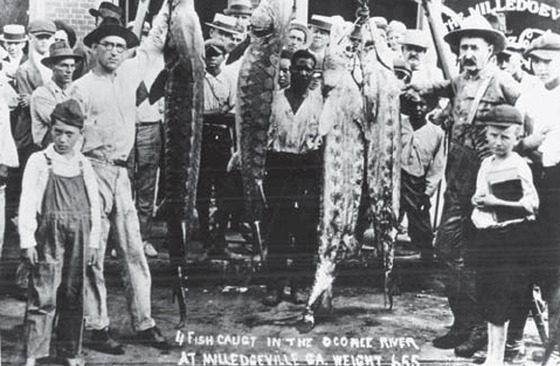 Sturgeon caught near Milledgeville in about 1900 (UGA Archives)
It's also not surprising that sturgeon were found in Milledgeville.
The Oconee River is a historic spawning site for the species. In late summer and fall, adults swim from the Atlantic Ocean into the natal rivers where they were spawned. In Georgia, sturgeon follow the Altamaha from the sea and into the river’s tributaries, the Oconee and Ocmulgee rivers, to spawn.
Young-of-year sturgeon mature for several years in estuaries at the mouth of the Altamaha before returning to sea.
The Oconee spawning grounds have been in use for so long, there are archival photographs of what could be the grandparents of the sturgeon spotted last fall.
The response to these sturgeon may seem extreme, but migratory fish are key biological indicators of ecosystem health, and every sturgeon counts. For example, the Altamaha River boasts one of the most robust populations of spawning Atlantic sturgeon in southeastern North America. An estimated 1,000-2,000 sturgeon are in the river each year, 87 percent of which are 1 to 2 years old.
In large part because of conservation efforts, the number of Atlantic sturgeon in the Altamaha drainage appears stable. But these big, ancient fish still face an upstream swim for survival.
Ethan Hatchett is a communications assistant in DNR’s Wildlife Conservation Section.
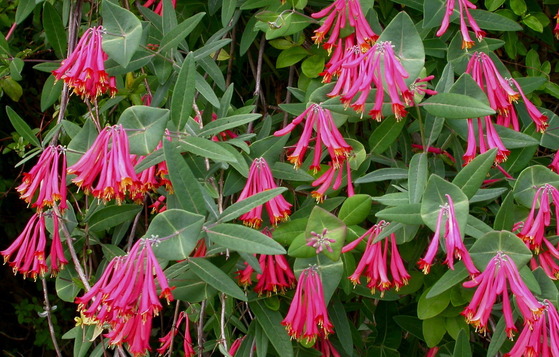 Coral honeysuckle in bloom in the Piedmont (Linda May/DNR)
By TERRY W. JOHNSON
We are constantly searching for plants that beautify our yards. And when we stumble across one that is gorgeous, benefits wildlife and requires little maintenance, we know we have found a treasure.
Unfortunately, our hunt often leads to plants that are native to the Far East and South America. Yet rarely do these exotics fit the bill. Instead, often the answer is growing right here in Georgia.
One plant that offers what many of us are looking for is a native, can’t-miss species called coral honeysuckle …
Read Terry’s column about this flashy vine that is a hummingbird magnet.
Terry W. Johnson is a retired DNR manager and executive director of TERN, friends group of the Wildlife Conservation Section. Check out past columns and his blog. Permission is required to reprint a column.
 Calf's carcass on Cumberland (left); head bleeding days earlier (DNR/NOAA MMHSRP permit 24359)
The carcass of this winter’s first North Atlantic right whale calf washed up on Cumberland Island National Seashore March 3. According to NOAA, a necropsy showed that “multiple lacerations” on the head from a vessel strike “had penetrated into deep soft tissues and bone, leading to multiple sites of necrosis,” or dead tissue. The wounds were first reported Jan. 3, yet later sightings of the calf and her mom Juno (right whale 1612) suggested the injuries might be healing. Then on Feb. 26 monitoring by plane and DNR boat documented the animal bleeding. Although the calf was one of 19 reported off the Southeast this year, two have disappeared and are presumed dead and a yearling born the previous winter was found off Savannah dead from a vessel strike (“From good to grim,” February).
Conservation groups continue to weigh in on two major wildlife bills. In the Senate, the older Recovering America’s Wildlife Act offers states more and dedicated funding ($1.3 billion a year) and bipartisan support, but faces continuing questions about how to pay for the legislation. In the House, the just introduced American Wildlife Habitat Conservation Act, which so far has only GOP cosponsors, would provide states $320 million a year to conserve habitat, end after five years unless Congress approves, change some Endangered Species Act approaches and use unspent Inflation Reduction Act funds as approved annually in the House.
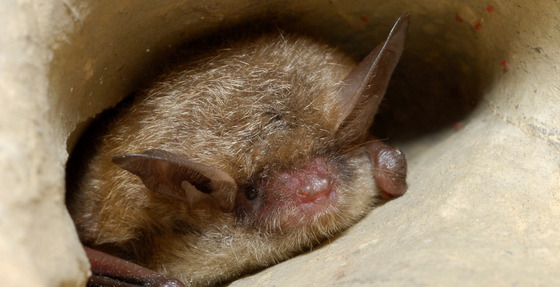 Tricolored bat (Pete Pattavina/USFWS)
Two first-of-their-kind agreements involving DNR and the Georgia Department of Transportation, with partners including the U.S. Fish and Wildlife Service, Army Corps of Engineers and Federal Highway Administration, will support improved bat conservation and speedier transportation work. A programmatic agreement signed Feb. 29 streamlines the consultation process transportation projects face regarding federally listed bat species. Also finalized that day, a Bat Conservation Fund will provide DOT funding for DNR to acquire high-quality habitats lost to tree clearing for roadwork. The proposed endangered listing for tricolored bats, found in forests statewide, helped spur the year-plus work to develop the agreements. (Related: “Where do bats go when habitats disappear?” Atlanta Journal-Constitution)
It’s bat maternity season, and from April-July Georgians should avoid excluding bats from homes and other structures when the pups are too young to fly and can be trapped and die inside. Any exclusions during this period must be done by a licensed nuisance wildlife control operator.
 Youth Birding T-shirt champion: Aleena Huang's barred owl
A barred owl drawing by Duluth eighth-grader Aleena Huang earned the grand prize in this year’s Youth Birding Competition T-shirt Art Contest. In all, seven other budding artists shared division honors as winners or runners-up, with the contest logging 153 entries from 61 public, private and home schools.
The annual birding competition itself turns 18 this year. Teams that haven’t registered yet for the free, fun and popular birdathon set for April 12-20 have only until March 31 to sign up.
Rare amphibians are off to a strong start in 2024. More than 100 federally threatened frosted flatwood salamanders, raised from eggs by Amphibian and Reptile Conservancy, were returned to their natal pond at Fort Stewart in southeast Georgia last month. And at Alligator Creek Wildlife Management Area near Lumber City, The Orianne Society’s Ben Stegenga found gopher frogs breeding in a pond where egg masses from the state-rare frogs had not been documented before.
 Banding American oystercatchers (Tim Keyes/DNR)
Quick takes:
- DNR and Manomet banded 35 American oystercatchers this month, the 23rd winter of research that has helped trace a rebound in oystercatcher numbers and discovered Georgia-banded birds wintering as far south as Panama.
- Since 2015, Project Safe Flight Georgia monitoring in Atlanta, Savannah and Brunswick has documented more than 4,200 birds that died after hitting buildings.
-
Montezuma Bluffs Wildlife Management Area, home to endangered relict trillium, is nearly free of invasive plants such as Chinese privet after a long-running effort by DNR’s west central Georgia fire crew added seasonal staff and contractor help through a Georgia Outdoor Stewardship Program grant.
- “Saving the Salt Marsh,” an article by U.S. Fish and Wildlife Service’s Dan Chapman, explores issues threatening the Southeast’s salt marshes and what’s being done to save them.
- Spring means it’s time for a refresher in BearWise basics, with tips for home and the outdoors. (Also download educational flyers and coloring pages.)
- New populations of state-rare eastern turkeybeard (Xerophyllum asphodeloides) have been found on Iron Mountain in the Cohutta Mountains.
-
Sea turtle strandings on Georgia’s coast in 2023 continued a downward trend, with 72 dead turtles documented and necropsies on about half attributing 24 percent to vessel strikes and 19 percent to fisheries-related issues.
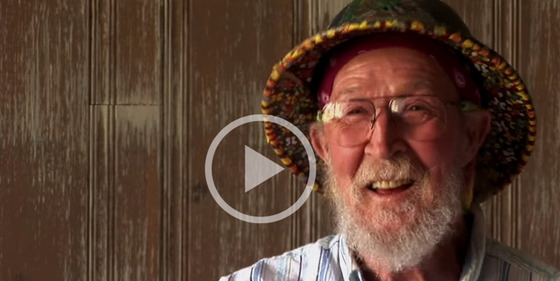 Dr. Jerry Payne describes his work modeling the decomposition of pigs by insects (Tom Davenport/folkstreams.net)
Names in the news: Retired USDA entomologist and DNR volunteer Dr. Jerry Payne of Bibb County died March 2 at the age of 86. Payne and his wife Rose supported DNR for decades through field surveys and their butterfly and bird counts ("Eyes on butterflies," August 2010). Known for his dry wit and broad interests, Payne was a pioneer in forensic entomology, had six species named for him (two of them millipedes) and decorated his Tick Hill property with more than 100 bottle trees. The Georgia Exotic Pest Plant Council is now the Georgia Invasive Species Council, a change that encompasses all taxa, not only invasive plants. Species lists are being expanded on the council’s new website.
COMING UP
- March 25-30: Southeast Shorebird Festival, with events including a shorebird survey on Tybee Island (March 25) and a bird walk on St. Simons Island (March 28)
- March 26: “Our Resilient Georgia Coast” webinar, 2 p.m. with Drawdown Georgia
- March 30: Turkey hunting season opens on private lands; April 6, on wildlife management areas, voluntary public access areas and national forest
- April 6-May 4: Georgia Bird Fest, with events across state plus the Bird Fest Summit April 20 in Athens (keynote speaker Dr. J. Drew Lanham)
- April 9: Georgia Birds Project Safe Flight webinar, 7 p.m.
- April 19: Preseason meeting of Georgia Sea Turtle Cooperative, 8 a.m.-noon, DNR Coastal Regional Headquarters, Brunswick
WHAT YOU MISSED ...
In the previous Georgia Wild:
- Checkoff for wildlife
- Right whales go from good to grim
- Red-shouldered hawks? No worries
- The beauty of spring ephemerals
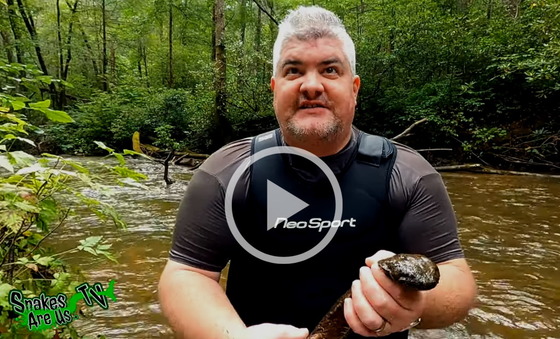 DNR biologist Thomas Floyd on Snakes Are Us TV hellbender episode
"Hellbender: What Is This Thing?," SnakesAreUS TV, including DNR staff
"Surprising Benefits of Whale Poo," Our Planet Earth (BBC), including DNR footage
“Snakes in Your Backyard,” DNR
Reuters graphics: "Why Plants Matter," "The Collapse of Insects," "The Planet's Hidden Climate Change," The Cutting Edge (drone technology helping in battle against plant extinction)"
"After boat strike, 'agonizing' decline, right whale calf found dead," (Charleston, S.C.) The Post and Courier, and others including Associated Press, CBS, Atlanta Journal-Constitution
Related coverage:
(+video) "'Heard hissing,' gator spotted in Hall County," WXIA-TV (Atlanta)
"Feds assert water rights in Okefenokee as mine nears approval," FOX News
"Can AI outsmart invasives? Study targets tegus," WGCU-FM (Fort Meyers, Fla.)
"DNR announces Youth Birding T-shirt art winners," AllonGeorgia
"Jeff Hullinger, 'modern Mark Trail,' (Jeff explains)," Georgia Public Broadcasting
(+video) "Sperm whale dies after beaching on Gulf Coast," Tampa Bay (Fla.) Times
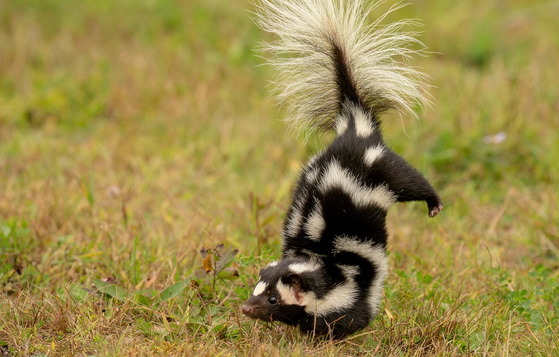 Ready, aim ... an eastern spotted skunk goes into defensive mode (Adobe)
It's breeding season for the acrobatic eastern spotted skunk. Males start leaving their rocky dens in late winter to search for females. Gestation lasts only 60-70 days before a litter of two to six pink, hairless kits are born. It takes about four months for kits to become able to forage for themselves, and to develop their powerful scent glands. Spotted skunks employ their stinky defense differently than striped skunks, performing a “pawstand” to accurately point their scent glands at a target instead of simply lifting their tail. Once common across Georgia, the eastern spotted skunk is now found only in the northernmost part of the state and near Columbus. If you see one of these rare animals, let DNR know. The website also has details on identifying spotted from striped skunks, Georgia’s other and more abundant skunk.
- Ethan Hatchett
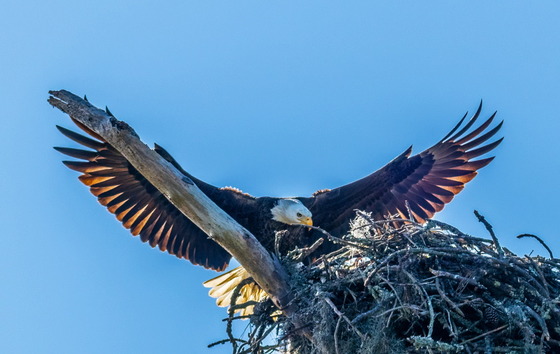 A bald eagle pair nesting on St. Simons Island has been busy keeping their eaglets safe and fed. In February, photographer Tom Sweeney snapped these shots of the adults flying to and from the nest (above) and the two juveniles keeping watch (below) when mom and dad were gone. Photos were taken from a required distance – at least 330 feet away – to avoid disturbing the nest.
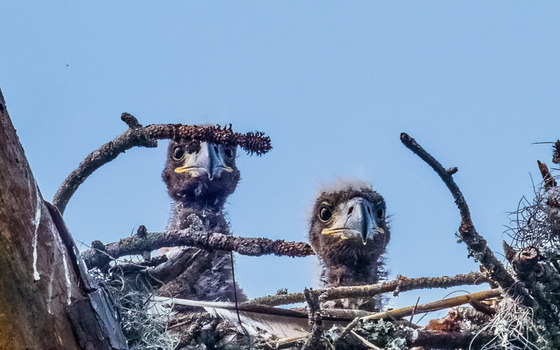
CREDIT
Masthead: coral honeysuckle (Alan Cressler)
Top
|